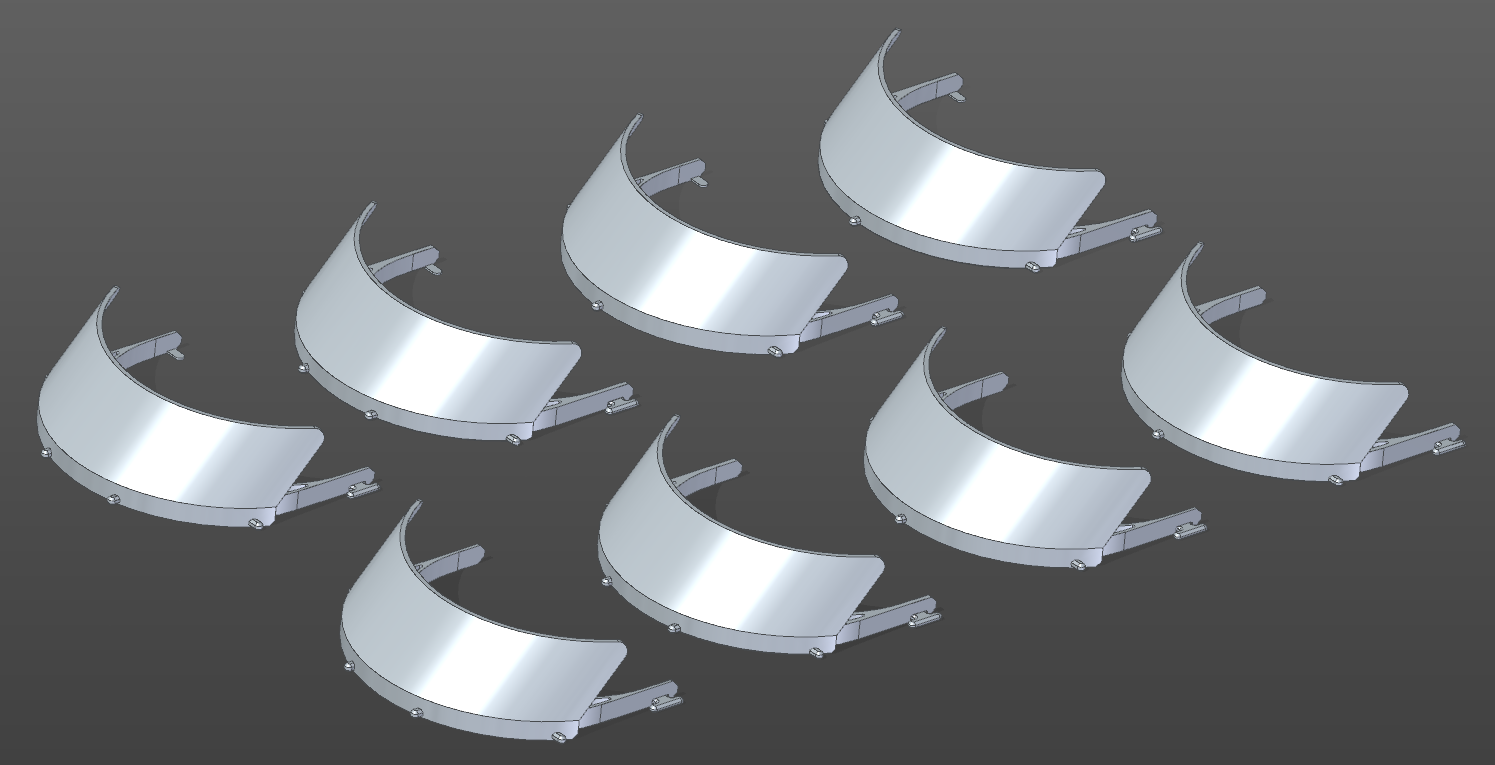
NIH DtM-v3 Face Shield for 0.8mm Nozzle
prusaprinters
<p><strong><em>EXPERIMENTAL</em></strong><br/> I've tested this with a 0.010" / 0.25mm shield, but not with the thicker 0.02" / 0.5mm material called for in the original Prusa design. Primarily, I would like to confirm that the lower reinforcement snaps into place nicely on a 0.020" / 0.5mm shield. If anyone has a printer with a 0.8mm nozzle and can get their hands on a shield to test this for me, I would greatly appreciate your feedback!</p> <p>In the same way that I adapted the Prusa RC2/RC3 design for wide extrusion, I've adapted the NIH DtM-v3 to take advantage of the high flow rate of large-diameter nozzles (larger than 0.4mm) to increase production speed. With this design and a print speed of 50mm/s, I can print a headband in ~57 minutes.</p> <p>VARIANTS:<br/> 4 Post/3 Post:<br/> The 3 post variant is designed to use shields punched with a standard US 3-hole punch (4.25" between hole centers). The 4 post variant matches the original Prusa RC2/RC3 face shield mounting post layout and is cross-compatible with shields made to fit Prusa headbands.</p> <p>Stiff/Flex:<br/> The stiff models have consistent 2.88mm (3 perimeters) wall thickness. The flex models have 2.88mm wall thickness for the front strap and 1.92mm (2 perimeters) wall thickness everywhere else. I find the stiff models to be more comfortable because the arms of the headband better resist the tendency of the elastic strap to apply pressure to the sides of the wearer's head with the ends of the arms. Still, the flex models print faster and with less material, so I've included them.</p> <p>Brim:<br/> It is a common problem to have the arms of the headband lift off the print bed during printing, so I've added a small brim to each arm to help with bed adhesion on the "Brim" models. The brim can be trimmed off with flush cutters.</p> <p>DESIGN REASONING:<br/> All wall thicknesses are multiples of the 0.96 extrusion width. This means that all of the walls (minus the intersections) are printed with 2 or 3 straight perimeter passes. Because the extrusion is so wide, we can safely disable infill and rely on perimeters to fill the thicker spots. This eliminates the slow zigzag motions required by rectilinear infill. Additionally, the front strap has been trimmed down to a height of 10cm since the extra material there is not strictly necessary.</p> <p>The design originally published by the NIH used a 45 degree angle for the top guard, but I found that this did not print well and had poor layer adhesion when using a 0.96mm extrusion width. I increased the angle slightly to 47.5 degrees, which solved the issue with minimal impact on the functionality of the guard.</p> <h3>Print instructions</h3><p>CRITICAL PRINT SETTINGS:<br/> Extruder:<br/> Nozzle Diameter: 0.8mm<br/> Extrusion Width: 0.96mm</p> <p>Layer:<br/> Primary Layer Height: 0.6mm<br/> Outline/Perimeter Shells: 3</p> <p>Infill:<br/> Interior Fill Percentage: 0% ;(Infill disabled)<br/> External Fill Pattern: Concentric</p> <p>Support:<br/> Generate Support Material: disabled ;(Supports disabled)</p> <p>Advanced:<br/> External Thin Wall Type: Allow single extrusion walls<br/> Internal Thin Wall Type: Allow single extrusion fill</p>
With this file you will be able to print NIH DtM-v3 Face Shield for 0.8mm Nozzle with your 3D printer. Click on the button and save the file on your computer to work, edit or customize your design. You can also find more 3D designs for printers on NIH DtM-v3 Face Shield for 0.8mm Nozzle.
